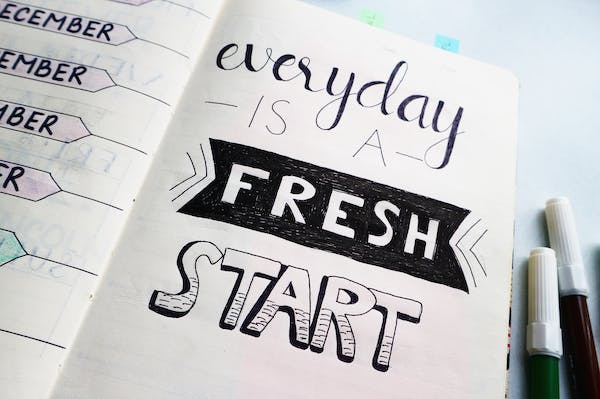
What Are the Love Languages: In the realm of relationships, understanding and effectively expressing love can be a beautiful yet complex endeavor. We all have different ways of giving and receiving love, and discovering the love languages can profoundly impact our connections with others. This article dives into the concept of love languages, explores the five primary love languages, and provides insights on how to enhance communication and connection in relationships.
What Are Love Languages?
Love languages are the distinct ways in which individuals prefer to give and receive love. They are like emotional communication channels through which we express affection and understand the affection shown by others. Understanding love languages helps us connect with our partners, family members, and friends on a deeper level, fostering emotional intimacy and satisfaction.
The Five Love Languages
1. Words of Affirmation
Words hold immense power, and for some people, hearing affirming and loving words is the key to feeling cherished. Compliments, kind gestures, and verbal expressions of love, encouragement, and appreciation form the foundation of this love language.
2. Quality Time
In this fast-paced world, dedicating quality time to our loved ones is essential. For individuals with the love language of quality time, undivided attention, engaging in meaningful conversations, and creating shared experiences are invaluable acts of love.
3. Receiving Gifts
Gifts have the ability to speak volumes to those who cherish this love language. It’s not about the monetary value but the thoughtfulness and effort behind the gesture. Meaningful presents that resonate with the recipient’s desires and preferences can make them feel deeply loved and appreciated.
4. Acts of Service
Actions truly speak louder than words for individuals who resonate with acts of service as their primary love language. Going out of one’s way to help, support, and alleviate the burden of responsibilities is a tangible display of love and care.
5. Physical Touch
Physical touch is a powerful love language that encompasses various forms of physical affection, such as hugging, holding hands, cuddling, or even a gentle touch on the arm. For individuals who respond to physical touch, these gestures create a profound sense of security, comfort, and emotional well-being.
Understanding Your Love Language
Discovering your own love language is a transformative journey that can enhance your self-awareness and improve your relationships. Reflecting on your desires and examining the gestures that make you feel loved will provide insights into your love language.
Importance of Knowing Your Partner’s Love Language
Understanding your partner’s love language is like unlocking the secret code to their heart. By learning and speaking their love language, you can create a strong foundation of emotional connection and satisfaction in your relationship. It enables you to meet their needs more effectively and demonstrate love in ways that resonate deeply with them.
How to Discover Your Love Language
Discovering your love language involves paying attention to what makes you feel most loved and cherished. Consider the following steps to help you identify your love language:
- Reflect on your childhood and past relationships. What gestures made you feel truly loved and appreciated?
- Observe how you express love to others. The way you naturally demonstrate love can provide clues about your own love language.
- Experiment with different love languages. Try expressing love in each of the five languages and observe which one makes you feel the most fulfilled.
- Communicate with your partner or loved ones. Openly discuss love languages and explore ways to support each other’s emotional needs.
Applying Love Languages in Relationships
Once you understand your own love language and your partner’s, you can integrate this knowledge into your relationship dynamics. Consider the following tips to apply love languages effectively:
- Speak your partner’s love language. Be intentional about expressing love in the way that resonates most with them.
- Practice active listening. Give your partner your full attention when they express their needs, desires, and feelings.
- Be patient and understanding. Embracing different love languages requires flexibility and a willingness to adapt to each other’s needs.
- Continuously learn and grow together. Love languages may evolve over time, so regularly revisit and discuss your emotional needs.
Enhancing Communication and Connection
Love languages act as a bridge for effective communication and emotional connection in relationships. By speaking each other’s love languages, couples can nurture deeper intimacy, strengthen their bond, and resolve conflicts more harmoniously.
Overcoming Challenges
Even with a solid understanding of love languages, relationships face challenges. Miscommunication, differences in preferences, and life’s stressors can strain emotional connection. During these times, openly discussing and reaffirming love languages can help navigate difficulties and rebuild connection.
Love Languages in Non-Romantic Relationships
Love languages extend beyond romantic relationships. They apply to familial bonds, friendships, and even professional connections. Recognizing and respecting the love languages of those around us can deepen our relationships in all areas of life.
Conclusion
Understanding and speaking the love languages is a transformative way to enhance communication and connection in relationships. By discovering our own love language and those of our loved ones, we can foster emotional intimacy, demonstrate love in meaningful ways, and build stronger, more fulfilling connections.
FAQs
1. Can a person have more than one love language?
Absolutely! It’s common for individuals to have a primary love language and a secondary one. People are unique, and their preferences for giving and receiving love can vary.
2. Can love languages change over time?
Yes, love languages can change over time. Life experiences, personal growth, and shifts in priorities can influence our emotional needs and the ways we express and receive love.
3. What if my partner’s love language is different from mine?
Having different love languages doesn’t mean your relationship is doomed. It presents an opportunity for growth, understanding, and mutual exploration. Embrace the challenge and learn to speak each other’s love languages.
4. Can love languages be applied in long-distance relationships?
Absolutely! Love languages can be adapted to suit the unique dynamics of long-distance relationships. It might involve finding creative ways to express love through technology, planning virtual dates, or sending meaningful gifts.
5. Can love languages help in resolving conflicts?
Understanding each other’s love languages can significantly aid in resolving conflicts. It allows you to approach disagreements with empathy and communicate your needs more effectively, promoting understanding and finding mutually beneficial solutions.
6. Are love languages cultural or universal?
Love languages are universal concepts, transcending cultural boundaries. While expressions of love may vary across cultures, the underlying emotional needs and desire for connection are fundamental aspects of being human.
7. Can love languages be applied to friendships?
Absolutely! Love languages apply to all types of relationships. Understanding the love languages of your friends can help you strengthen your bond and show appreciation in ways that resonate with them.
8. How can love languages benefit self-love?
By understanding your own love language, you can identify the gestures and actions that make you feel loved and appreciated. Practicing self-love in your preferred love language can contribute to your overall well-being and emotional fulfillment.
9. What if my partner and I have different primary love languages?
Having different primary love languages can present challenges, but it also offers an opportunity to expand your emotional repertoire and grow together. By actively learning and speaking each other’s love languages, you can bridge the gap and create a more harmonious relationship.
10. Can love languages be a useful tool in dating?
Absolutely! Understanding and speaking your partner’s love language can significantly enhance the dating experience. It helps you establish a strong emotional connection, demonstrate care and thoughtfulness, and foster a deeper understanding of each other’s needs.










